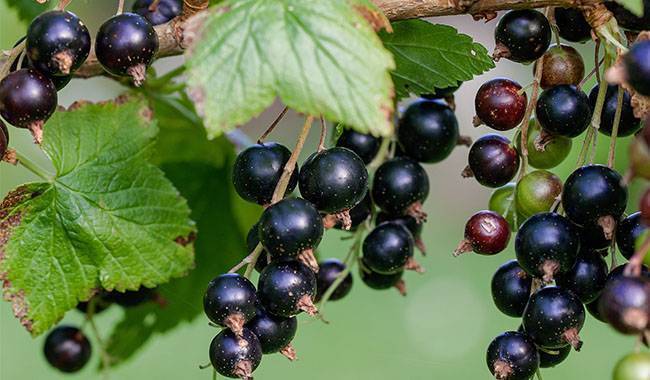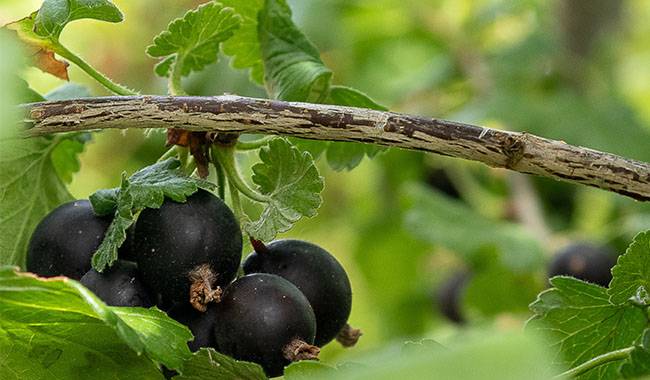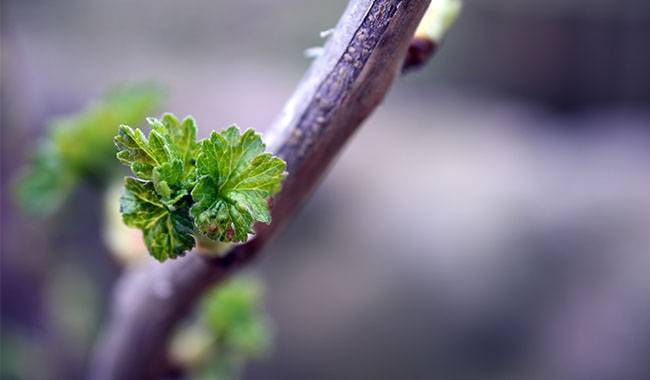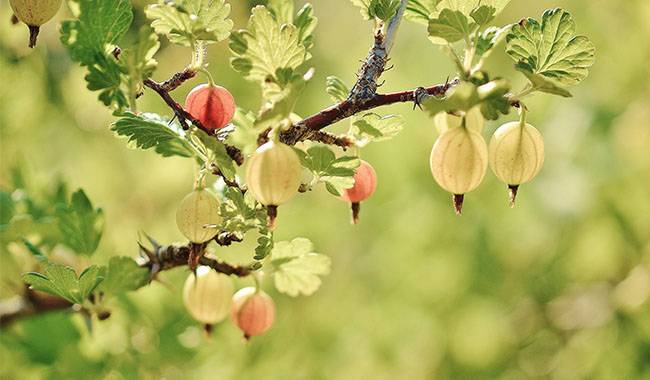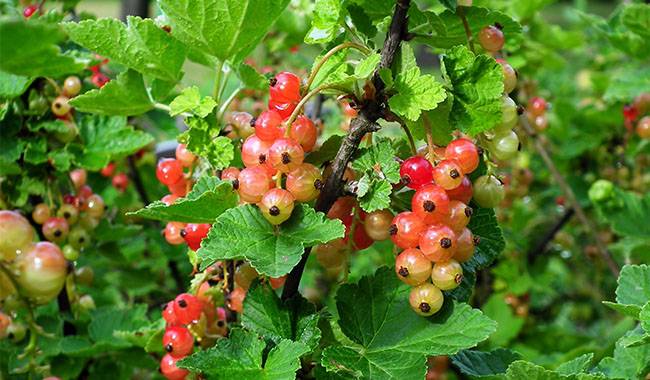
Currants, black or “colored”, have at least a few bushes sure to be found on every garden plot. Usually on its perimeter, sometimes in the center. A place of honor.
Seedlings of this crop are cheap, perhaps because they are easy to propagate (just insert the stems into the ground), or perhaps because breeders of varieties of currants have derived so many that almost everyone on the planet can find their favorite.
All this leads to the fact that not every gardener asks about the rejuvenation of Currant Bush. However, in some cases, it is more beneficial to rejuvenate an old Currant Bush than to plant a new one.
To help gardeners who find it easier to put old bushes in order by rejuvenating them, not uproot them. We have posted it today.
WHEN TO START REJUVENATING CURRANT BUSH?
Usually, when the current will span a decade or more, the bush is simply uprooted and after a few years, the soil is allowed to rest, bringing in organic fertilizer (a bucket in the area where the bush is growing) and mineral fertilizer (a tablespoon of nitroaminophos).
Then, if a healthy bush had previously grown in the area, a new one was planted.
There are exceptions – for example if the gardener really likes a certain variety, say “Currant Little Prince”, which is simply not available in any nursery in the area, or if there are seedlings and their abundance, and the gardener no longer has the physical strength to uproot the old bush and plant seedlings in the ground.
However, in general, the basic pruning of Currant Bush, i.e. its actual recovery, should be done in the year when the seedlings are planted on the plot.
Plant a seedling, it doesn’t matter – in the fall or spring, tilt it and cut off all the buds, leaving only their parts, five buds per growth. Here you have the first serious pruning and the first rejuvenation because the youngest buds will grow from the shoots.
THE BEST TIME TO PRUNE CURRANT BUSH
Most gardeners tend to do their fall pruning after most of the current leaves have fallen to the ground, i.e., they fall off naturally.
Other gardeners, of whom there are slightly fewer, say that it is best to prune currants early in the spring, but in this case, strictly speaking, there must be time to complete all pruning-related operations before the buds begin to bloom, that is, while there is still snow underfoot.
In addition to this, pruning currants in spring has another weighty benefit – the affected branches are visible after the winter and they should be cut off first.
Spring and fall pruning of currants are essentially the same, and it is important to still do restoration pruning.
6 MAIN REASONS FOR RESTORING CURRANT PRUNING
Restoration pruning of current necessarily includes the removal of branches older than 5 years, all vertically oriented shoots, i.e. spikes and very weak shoots (thinner than a simple pencil, with sharp edges and almost useless).
Currant Bush should be rejuvenated urgently in the following cases.
- If it is very sick, it is appropriate to leave only healthy shoots at this time.
- If the bush has become very large, “disintegrated” on the plot, and has disturbed neighboring plants.
- If a large number of shoots have appeared that are actively trying to get into the exact center of the canopy, this will certainly lead to a thickening of the canopy.
- If you have a plot of land that already has old Currant Bush and you are not ready to pull them out.
- When the plants are more than seven years old and the yield has become very dismal.
- If for some reason the root system has been damaged, then there is a big difference between the above-ground part and the below-ground part, and this defect should be eliminated.
Polishing the center of the crown of the currant bush will naturally lead to an increase in yield, reduce the risk of fungal diseases and eliminate the need to treat the plant with harmful chemicals, reduce the number of pests and increase plant immunity. The work of caring for neater and younger current plants will be greatly reduced.
FEATURES OF PRUNING CURRANT BUSH
First of all, there is no rainy weather, and while water is useful for all living things, there can be bacteria in its droplets, so when you cut a shoot and a drop of waterfalls on it, there is a good chance that the plant is already infected.
Pay attention to cutting tools – saws, hacksaws, pruning shears, gardening knives, axes – everything must be sharp and clean. Take a can of alcohol and a piece of cotton, and whenever you move from one plant to another, be sure to wipe the blades of your cutting tools with alcohol to disinfect them and prevent the infection from spreading.
After pruning currants, be sure to remove all cut shoots as soon as possible. They can be pests, and these pests, sensing a mistake, will rush into the soil to find refuge, and this cannot be delayed – cut and burn.
If your current trees are more than seven years old and you want to rejuvenate them, then don’t do it in one year, extend the rejuvenation of this plant for two years, preferably three, so that the plant doesn’t experience the most intense stress from removing a large number of shots at once.
You should also know that, like the age of a person, the age of a plant is not infinite. For example, the black Currant Bush with thicker and more active roots can be rejuvenated four times in its lifetime.
However, for cauliflower currant, whose root system is more pronounced towards the taproot, the rejuvenation should not exceed three times in the plant’s lifetime, then the bush is still more suitable for pulling.
Why rejuvenate only three times? Because as a plant, the maximum age of life of current is usually calculated at 30-35 years (based on experience).
ACTION GUIDE TO REVITALIZE CURRANT BUSH
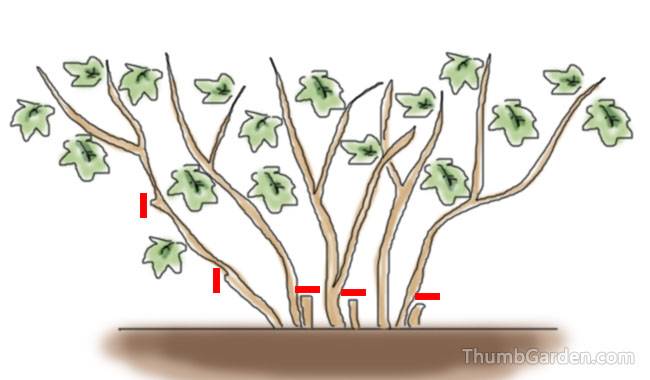
In autumn, the first thing to do is to choose which wood we want to remove and which we want to leave behind. We will immediately understand how big our next step will be in terms of pruning. The darkest is the old wood, which should be removed, leaving only the shoots with light-colored wood.
If you prune in the fall, you should water the bushes with a few buckets of water, and if in the spring, it is best to feed them with a nitrate fertilizer by dissolving a teaspoon of fertilizer in a bucket of water and pouring this amount of liquid under each rejuvenated current tree.
In addition to pruning the old wood, cut off all bent shoots, shoots that have grown deep into the canopy, all shoots that have been crushed by snow or picked, and remove all diseased current shoots that are ringed.
The main rule, in this case, is that you should leave the most lively and youngest shoots of currants, like a sculptor, “removing everything unnecessary”, so that the plant comes to life and the shoots begin to develop as actively as possible, without disturbances. Here, too, the shoots formed from the roots (from below the ground) will begin to grow.
Many people think that activating the growth of such shoots in currants is difficult, in fact, no: you only need to cut off a few old branches on the ring and the shoots will begin to appear on the surface of the soil.
By the way, in terms of renewal of Currant Bush, the hollowed outshoots are very useful, they are strong, and most of all – do not let them form the top, that is, the shoots that grow strictly vertically and grow at the very bottom of the hollow.
And the shoots themselves are too much on one tree and do not need to leave, otherwise, we thicken the bush, leaving only three of the strongest shoots and remove the rest on the surface of the soil.
Also, be sure to cut off a few inches of all current shoots, this uncomplicated method will promote the thickening of shoots, they will stop stretching into bunches and form more inflorescences on them.
Interestingly, with the help of such pruning, it is even possible to rejuvenate Currant Bush, whose tree is already six months old, but in this case, you should act “savagely”: simply cut the entire bush, leaving each shoot with only a few or three healthy live shoots on its part.
In addition, if pruning is done in the fall, current trees must be watered with three buckets of water, or fed with a tablespoon of nitrophenols, which must also be dissolved in a bucket of water.
In the future, such a Currant Bush will begin to grow actively and will form many shoots, you need to select about five pieces from the whole pile of shoots and remove the rest ruthlessly, cutting them on the ring. After such pruning, you can forget about resuming pruning for 8 or even 9 years if you do only sanitary pruning.
THE EASIEST WAY TO REJUVENATE CURRANT BUSH
There is the simplest variant of rejuvenating old Currant Bush – in early spring or late fall you simply cut off a quarter of the shoots on the soil surface, and so on for four consecutive seasons, and most importantly – do not get confused and do not cut off the same shoots for two consecutive seasons, otherwise, this rejuvenating pruning will not be beneficial.
CARE OF REJUVENATED CURRANT BUSH
Of course, water regularly (one bucket of water per week), weed (preferably keeping the bush area under black fallow), loosen the soil to a depth of 1-1.5inch (3-4 cm), and control weeds, diseases, and pests.
Next, apply fertilizer: preferably in spring, use nitroaminophos card at a rate of one tablespoon diluted in a bucket of water under each bush, pre-loose the soil and remove all weeds.
In midsummer you need to dilute a teaspoon of potassium sulfate and calcium superphosphate in a bucket of water and pour this amount in each bush, pre loosening the soil and removing all weeds, while in autumn you should do moisturizing watering, pouring 2-3 buckets of water in each rejuvenated currant bush.
Conclusion. As you can see, there is nothing complicated about the regeneration of currants, no special mysteries or mysteries.
The main thing is to choose this dry and sunny autumn or spring. To arm yourself with sharp and clean pruners or gardening knives. Cut off the old wood that has blackened, arrange the young shoots, remove those that have grown deep into the canopy, and then follow the emergence of new shoots. Choose the strongest and well-developed ones, it will guarantee of future harvest.
Of course, during this time Currant Bush should be groomed like a child. Protected from disease and weeds, loosened, watered, and fertilized. There is absolutely no need to plant new varieties of currants on this land and the old ones will still live for a long time.




